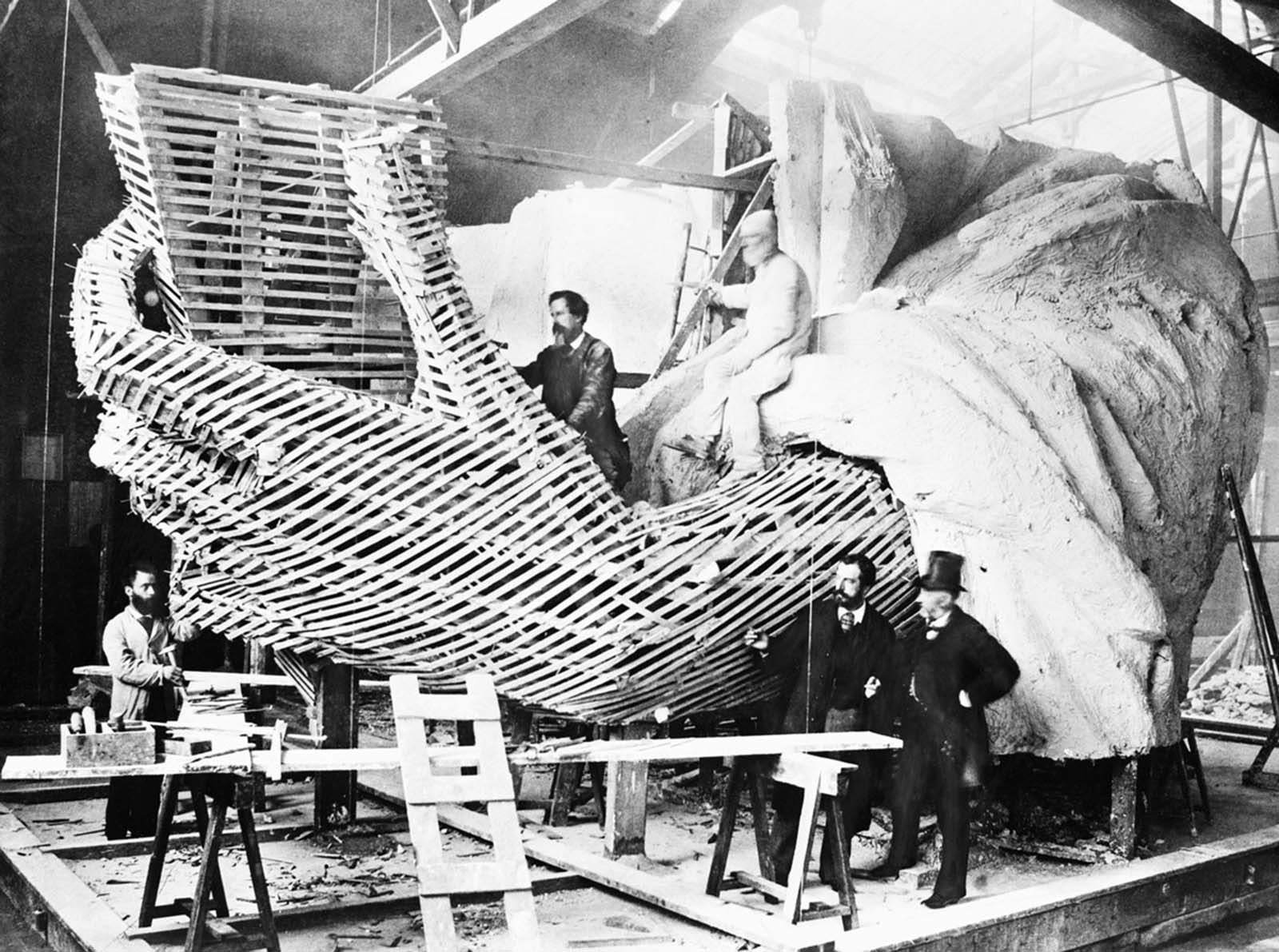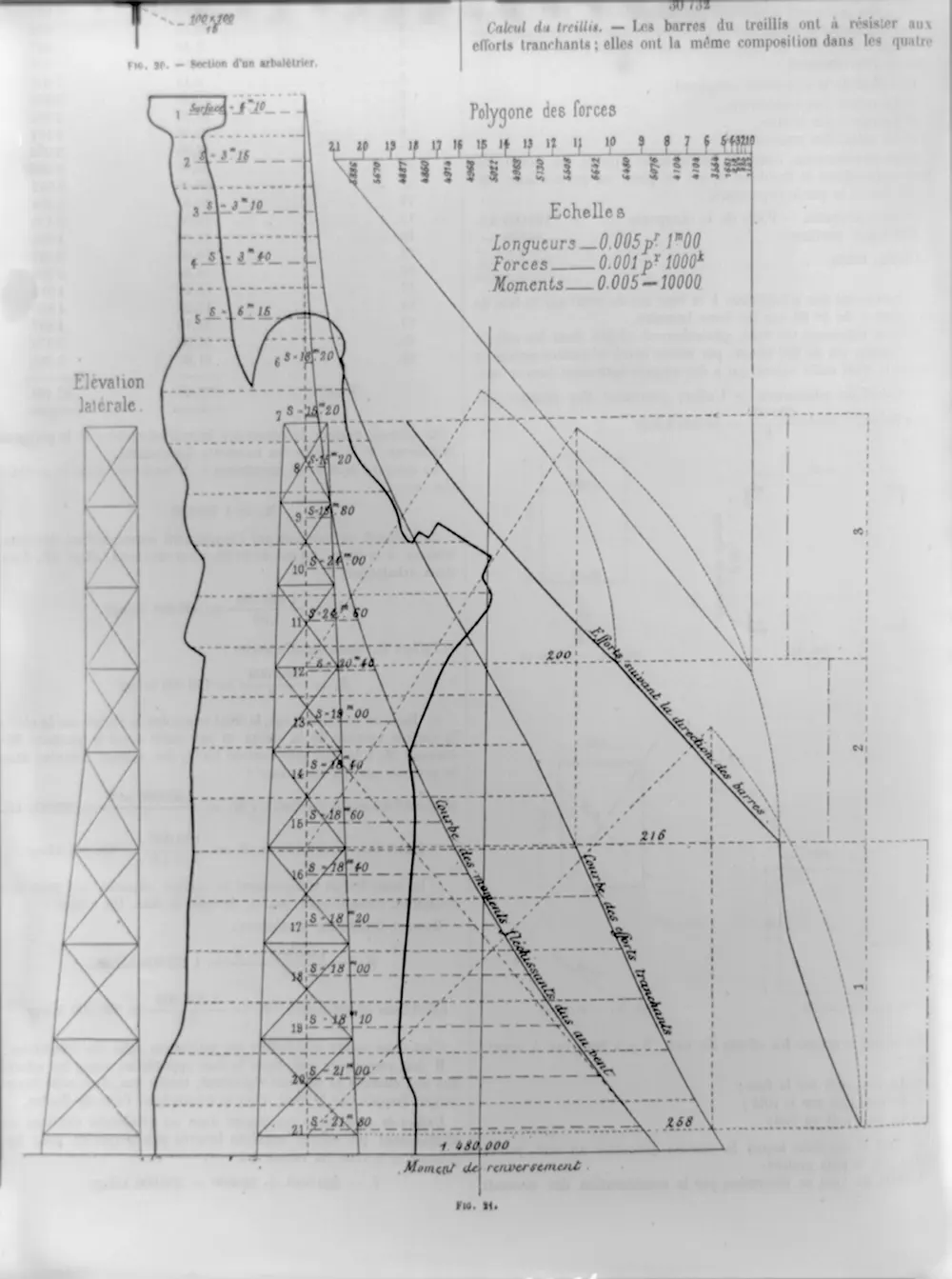
An 1875 image of Frédéric-Auguste Bartholdi, the creator of the Statue of Liberty, posing with a visitor while the statue was under construction inside a Paris studio.
The Statue of Liberty, officially Liberty Enlightening the World, designed by Frédéric Auguste Bartholdi and Gustave Eiffel, was a gift to the United States from the people of France in 1886.
With a tablet inscribed with the date of America’s independence, a broken chain beside one foot symbolizing the abolition of slavery, and a guiding light held up for the world to see, the structure is loaded with symbolism.
The sonnet “The New Colossus,” written by Emma Lazarus for the statue, reads in part: “Here at our sea-washed, sunset gates shall stand / a mighty woman with a torch, whose flame / is the imprisoned lightning, and her name / Mother of Exiles.”

The head of the Statue of Liberty, on display in a park in Paris, France, in 1883.
The statue has stood watch over New York Harbor for more than 130 years, as the nearby city skyline evolved and grew dramatically.
Gathered on this article, images of the Statue of Liberty, inside and out, from her birth in Paris to the present day.
The Statue of Liberty is a figure of Libertas, a robed Roman liberty goddess.
She holds a torch above her head with her right hand, and in her left hand carries, a tabula ansata inscribed in Roman numerals with “JULY IV MDCCLXXVI” (July 4, 1776), the date of the U.S. Declaration of Independence.

Men in a workshop hammer sheets of copper for the construction of the Statue of Liberty in 1883.
A broken shackle and chain lie at her feet as she walks forward, commemorating the recent national abolition of slavery.
Bartholdi was inspired by a French law professor and politician, Édouard René de Laboulaye, who is said to have commented in 1865 that any monument raised to U.S. independence would properly be a joint project of the French and U.S. people.
Because of the post-war instability in France, work on the statue did not commence until the early 1870s.
The statue was administered by the United States Lighthouse Board until 1901 and then by the Department of War; since 1933 it has been maintained by the National Park Service as part of the Statue of Liberty National Monument. Public access to the balcony around the torch has been barred since 1916.

The assemblage of the Statue of Liberty in Paris, showing the bottom half of the statue under scaffolding, with the head and torch at its feet, photographed in 1883.

The right arm and torch of the Statue of Liberty on display at the Centennial Exposition in Philadelphia.

An elevation showing the statue’s iron framework, designed by Gustave Eiffel.

A diagram of the statue’s dimensions.

The Statue of Liberty’s head on display at the Paris World’s Fair.

The internal frame is assembled.

The internal frame is assembled.

The fully assembled statue towers over its workshop and the surrounding buildings.

The statue is formally unveiled to the United States ambassador to France before being shipped to New York.


Original caption: “New York, NY – Statue of Liberty toes and base of torch on the ground, preparatory to being hoisted into position onto the pedestal on Bedloe’s Island.” Photographed circa 1885.



